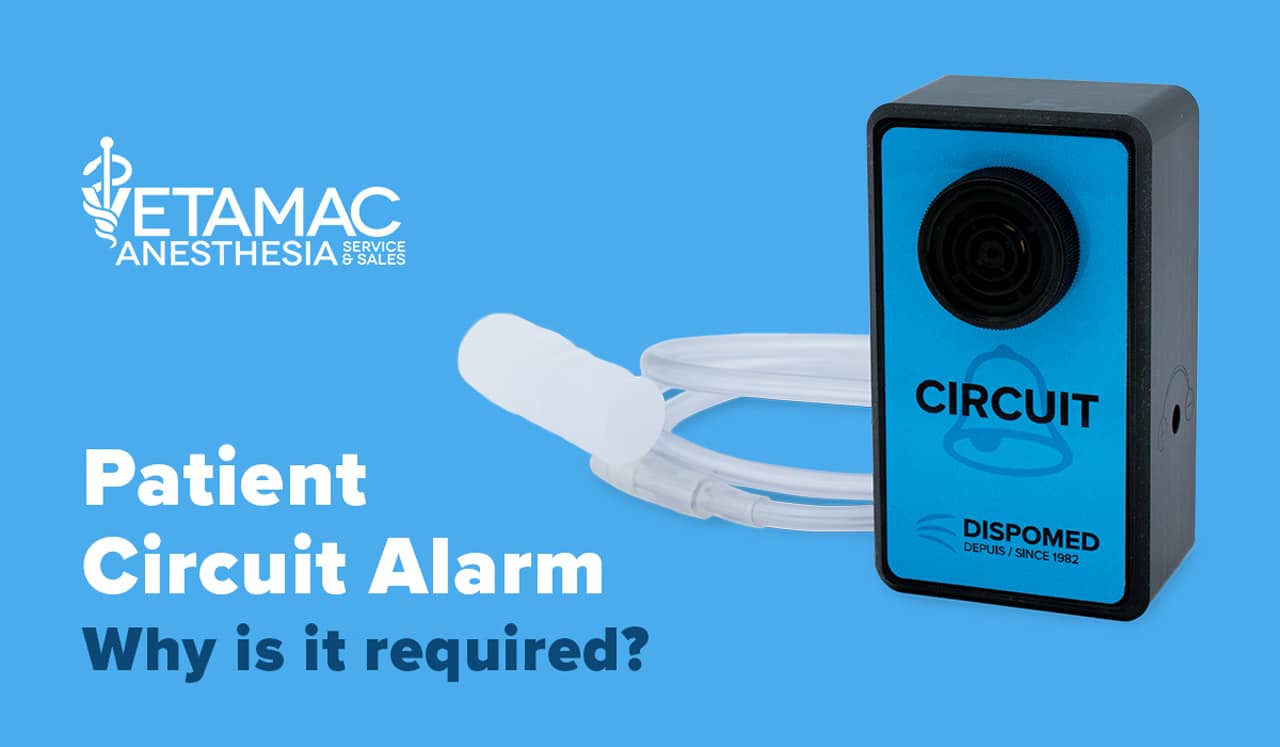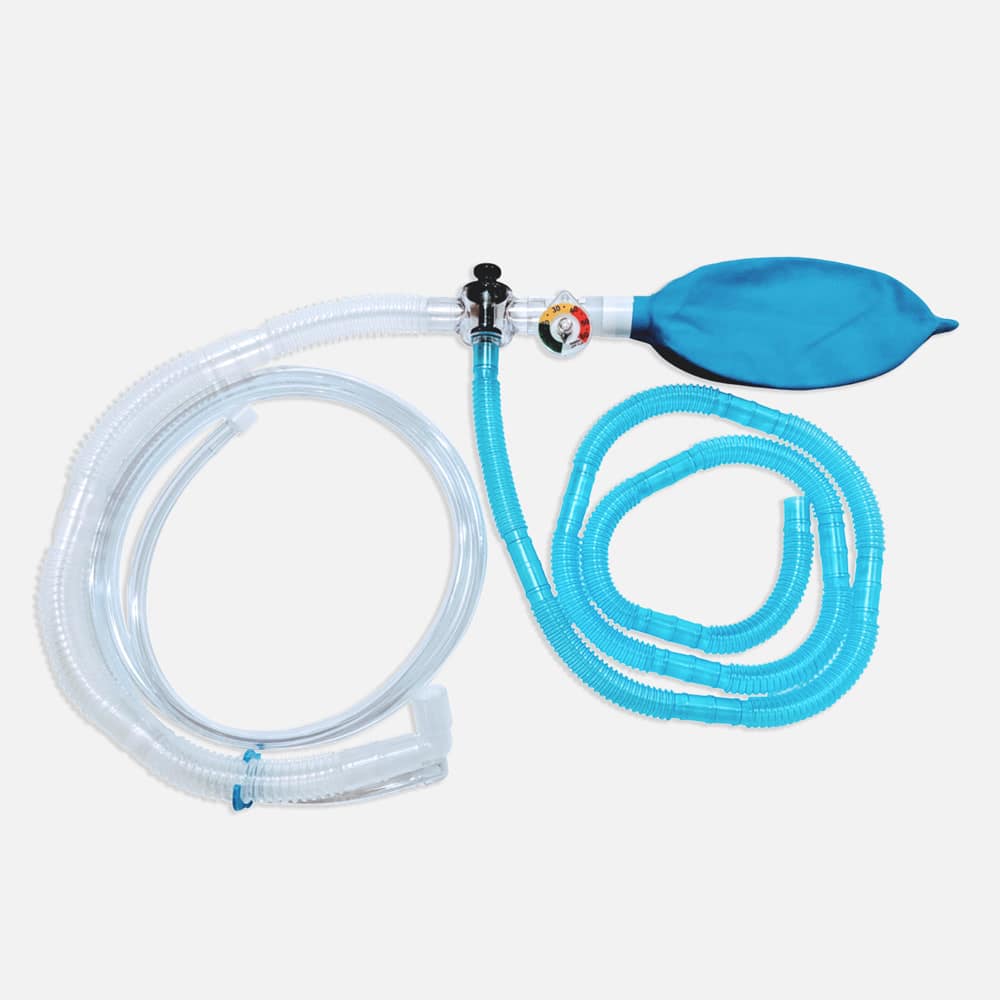Call Us
1 800 334-1583
Why Should a Patient Circuit Alarm Be Required?

What is a patient circuit alarm?
A patient circuit alarm monitors the pressure within the breathing circuit (whether Bain or rebreathing) and alerts the medical team when the pressure exceeds a predetermined threshold. Positioned between the common gas outlet and the breathing circuit, the alarm typically reflects the pressure in the patient’s airway, except in rare cases (see below: alarm limitations).
The alarm is generally set to trigger at 12-15 cmH2O. This range is considered safe for most patients, allowing manual ventilation without causing the alarm to activate, while still providing a warning before the pressure becomes too high.
However, this doesn’t imply that pressures below 15 cmH2O are always safe or that pressures above 15 cmH2O are automatically harmful. For instance, pressures of 30 to 40 cmH2O are sometimes used during recruitment maneuvers to address hypoxemia. On the other hand, excessive volume inflation in patients with highly elastic thoracic walls, such as pediatric patients, could cause volutrauma. This highlights that clinical judgment is crucial and that the alarm should not be solely relied upon.
Ultimately, the aim is for the alarm to go off at a threshold that allows adequate time for intervention before the pressure becomes hazardous for the patient.
If the air within the circuit is unable to escape (for example, when the pop-off valve or APL valve is closed), pressure rises rapidly once the breathing bag is full. If the alarm is set at too high of a level, there might not be enough time to respond effectively.
What risks are associated with overpressure in the breathing circuit?
As pressure builds up within the circuit, it similarly increases in the patient’s airways if they are connected. This elevated pressure can compress blood vessels, reducing venous return to the heart and potentially leading to cardiac arrest. Additionally, excessive pressure on the lung tissue can result in a pneumothorax (lung rupture) or pulmonary edema (increased permeability). Both of these conditions are critical and have poor outcomes, making the alarm an essential tool in preventing such complications. Therefore, it’s crucial to respond promptly when the alarm is triggered.
What steps should you take when the alarm is triggered?
The fastest method to relieve pressure in the circuit is to disconnect a portion of it. Any part of the circuit can be disconnected, but typically, it’s easiest to detach the breathing bag, the breathing tube, or the connection to the endotracheal tube. When removing the breathing bag, take care not to compress it, as that could briefly cause a spike in circuit pressure.
Alternatively, you can open the pop-off valve, though this may take a bit longer. The priority is to reduce the pressure as quickly as possible.
After relieving the pressure, it’s crucial to assess the patient for any signs that could indicate complications such as cardiac arrest, pneumothorax, or pulmonary edema. Some symptoms appear immediately (such as those of cardiac arrest or tension pneumothorax), while others, like edema or subcutaneous emphysema, may take a few minutes to develop. Staying alert and monitoring closely is essential.
Key features of the Patient Alarm
- Easy installation
- Standard 9 volt battery
- Can be installed on any brand of anesthesia machine
- Factory pre-set at 15cm H2O, but adjustable.
- 5 year warranty
How can you ensure the alarm stays operational?
Patient circuit alarms need very little upkeep. It’s important to change the batteries regularly and test the alarm every day. During the leak test of the anesthesia machine, the alarm should activate when the pressure reaches 12-15 cmH2O (depending on the preset value). If the alarm doesn’t sound, it could be disconnected or the battery may need to be replaced.
What are the limitations of patient circuit alarms?
While patient circuit alarms are valuable tools, they do have some limitations that should be kept in mind. In the case of a one-way valve failure, particularly if the exhalation valve stays closed, pressure could build up in the part of the circuit connected to the patient but not in the section linked to the alarm. Although this is an uncommon occurrence, it can be prevented with proper pre-use checks of the equipment. If this happens, the patient would be unable to breathe, and you would observe an obstructive respiratory pattern or a lack of respiratory movement, with no capnograph reading.
If there’s concern about increased airway pressure, disconnecting the patient circuit can help confirm whether the pressure is within normal limits.
Additionally, the alarm relies on human action to resolve the issue. That’s why it’s essential for trained personnel to be present during anesthesia and to know the appropriate steps to take if the alarm activates.
Lastly, the alarm is set to a fixed threshold, which may not be ideal for every patient, as mentioned earlier. Therefore, clinical judgment should always be exercised when responding to an alarm.
Conclusion
Excessive pressure in the breathing circuit is a critical situation that can rapidly worsen the patient’s condition, making timely alerts essential. Patient circuit alarms play a vital role in patient safety by signaling potential overpressure before it becomes dangerous. However, relying solely on the alarm doesn’t guarantee the safe operation of an anesthesia machine. These machines are equipped with additional safety features, such as safety valves, that help minimize risks. Despite these precautions, the risk is never eliminated, and it remains crucial for a trained individual to monitor the patient and respond appropriately if an issue arises. Ultimately, human vigilance is the most important factor in ensuring patient safety.






